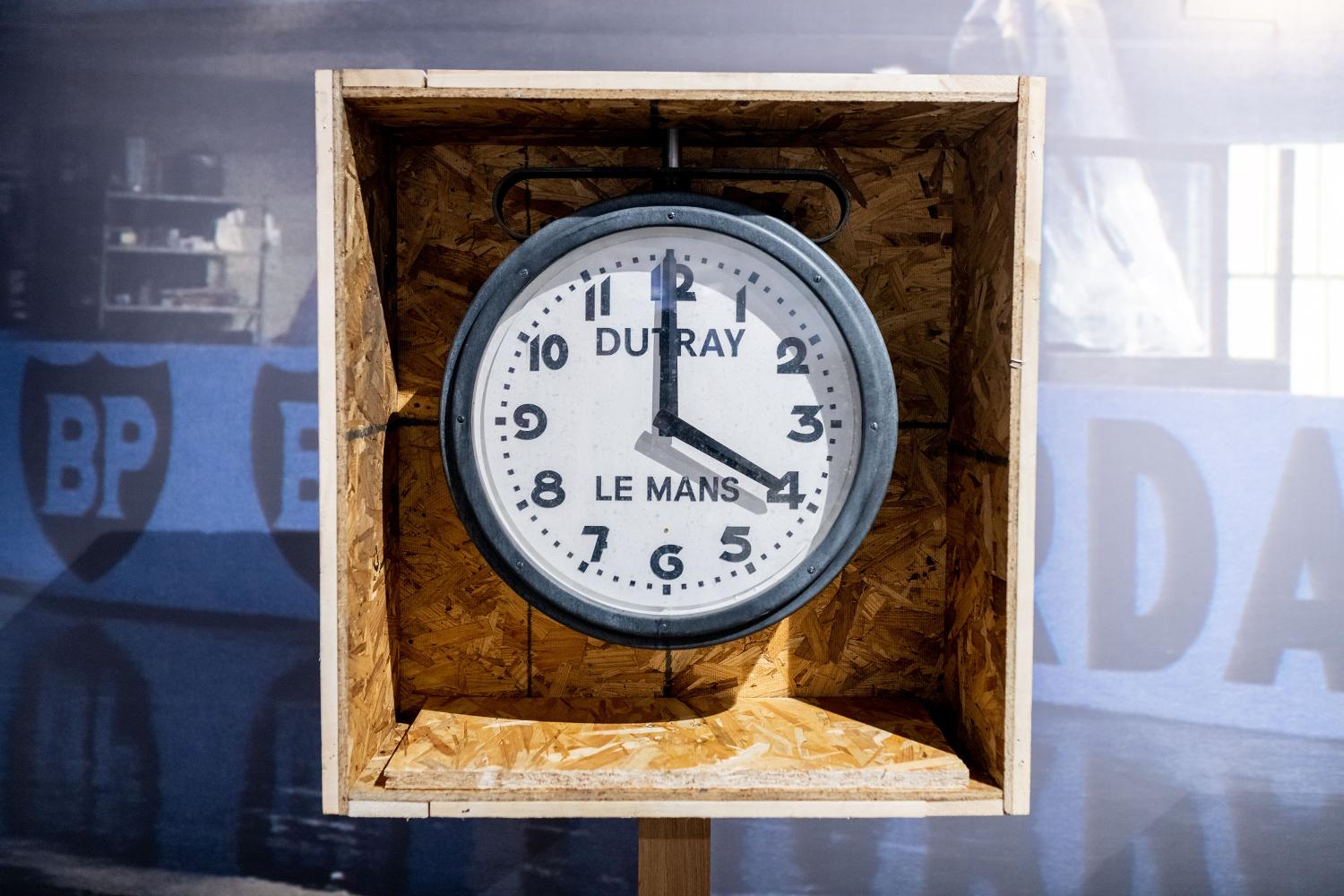In the ACO archives that make up the Museum's collection, each item is a reflection of the history of the legendary endurance race. This is certainly the case for the replica of the famous official clock of the 24 Hours of Le Mans circuit. It has become a true testimony of the past, evoking eras and facilitating travel back in time.
On display in the temporary exhibit "Le Mans 66," this replica demonstrates how Franco-American production designer and artistic director François Audouy's vision was in keeping with the realism of the film.
Le Mans, a race against time
Another clock located in the miniature car area reminds how integral it has become to the Spirit of Le Mans. It brings an additional sense of competition to the event as it records the passing of 24 hours in which every second is significant. During the race, time is now more important than ever, and so the ACO decided it was time for a stationary clock to mark the hours, minutes and seconds as they tick by.
The Dutray clock, the ultimate honor for the local watchmaker
The official clock made its debut at the circuit in 1931. At the time, the Dunlop clock manufacturer by Brillié was mounted on the pit building. For spectators, a second one visible to thousands was installed upstairs in the official grandstands. In 1949, a Rolex from famous Le Mans jeweler Hardyau adorned the pediment of the pit building where Race Direction held court. Another clock was installed at the iconic Dunlop Bridge through 1955. With the construction of the new pits the following year, a support beam near Race Direction briefly carried an octagonal clock along with the first red and green track lights. It was replaced in 1959 by a long stem carrying the famous Dutray clock. This is the one given a close-up in Steve McQueen's 1970 film "Le Mans." The shot proved an excellent marketing tool for the grand Le Mans jeweler.
The modern era arrived at the circuit in 1974 when a digital Tissot clock replaced its predecessor, but that was to be short-lived and a square Dutray-Seiko was selected in 1976. In 1983, the construction of the concrete wall separating the track from pit lane led to the replacement of the stem in favor of a mast to display another square Dutray-Seiko. In 1991, the redesign of the pits and creation of the sporting module led to the construction of a walkway housing a square clock, lap counter, anemometer, thermometer and of course the track lights. Lastly, at the dawn of the new century, a spectatular dual-faced Rolex clock was installed that has faithfully given the time to millions of spectators every year since.
At the 24 Hours of Le Mans Museum, the ACO tells the epic tale of motoring in La Sarthe and the success of its legendary international race through 140 select vehicles. Bentley, Ferrari, Jaguar, Ford, Porsche, Matra, Audi, Peugeot, Toyota... iconic models illustrating the greatest names of motorsport take visitors through almost a century of history at the world’s greatest endurance race. Temporary exhibitions add a topical note to the permanent displays which can be extended with a visit of the world-famous Circuit des 24 Heures du Mans. The Museum reopened on 1 June!
>> LEARN MORE ABOUT THE 24 HOURS OF LE MANS MUSEUM <<

